New Bedford - Whaling Capital of the World
Thursday, April 28, 2016
 New Bedford, Massachusetts, United States
New Bedford, Massachusetts, United States
When I was in my teens and started to get interested in
politics, I bought and read two or the issues of the book “The Almanac of American
Politics”, published on a biennial basis . The books were over a thousand pages
thick and went into great detail on the political, demographic, and economic
history of America not only by state but also by congressional district. That
was around 35 years ago, but what I read back then built many impressions in my
mind of places that only get reformed when I visit them myself. Having traveled
extensively in the country, that’s now most places. And, of course, places have
evolved in the more than three decades since I read those books.
New Bedford, Massachusetts is a place that was described in
a less than flattering manner as a once prosperous mill town that fell on hard
times, and the 1970s and early 1980s were a rough time economically in much of New
England. It somewhat clouded my view of the city even though all I’ve seen of
it to date was to pass through several times on the Interstate over the years
on the way to Cape Cod.
In recent years I’ve tried to explore units of the National
Park system that I haven’t been to before and was intrigued by the New Bedford
Whaling National Historical Park . I decided to stop for a day and check it out
on my way to Cape Cod.
New Bedford’s story is that during the first half of the
nineteenth century it replaced Nantucket and Provincetown as the leading
whaling city in America and the world. Ships based in the port went out to the
oceans all over the world to hunt whales which at the time were the source of
the highest quality oil for candles and lubricants. The industry made New
Bedford one of the richest communities in American on a per capita basis. The
whaling industry declined in the latter half of the nineteenth century as whale
stocks got depleted and new sources of fuel like petroleum were found. In that
era, though, the textile industry boomed and New Bedford grew into one of the
biggest mill towns and producers of cloth in America. From the 1920s onwards,
though, those mills moved to the cheaper, non-unionized southern states and New
Bedford fell into decline in a pattern similar to what has happened in factory
towns across the country as industrial production of labor-intensive goods has
moved overseas .
The whaling industry and the textile mills attracted a
somewhat unusual mix of immigrants to New Bedford. The Azores and Cape Verde
islands were both whaling centers themselves and also on the circuit for
picking up supplies for American whaling ships which picked up a lot of crew
from those Portuguese lands. Azoreans, Madeirans, and Cape Verdeans came to
make up a majority of New Bedford’s population, one of the few large settlements
of those ethnicities anywhere in the country. Azoreans even eventually replaced
Yankees as ship owners and financiers to the industry. Even today New Bedford’s
population consists heavily of people whose ancestry is from the Portuguese
islands along with French-Canadians who came later to work in the mills and
recent immigrants from Central America.
A second significant aspect of New Bedford’s history is the
leading role the city played in the so-called Underground Railroad in the
decades before the Civil War. New Bedford was a hotbed of abolitionism led by
its large Quaker population (which also founded the whaling industry) and
became a safe haven for escaped slaves as well as having one of the North’s
largest populations of free Blacks .
New Bedford’s history is chronicled in the National
Historical Park’s visitor center and in some of the buildings that surround it
in the historic center of town, some of which weren’t open at the time of my
visit. The National Park unit essentially consists of several historic buildings
within a larger historic district rather than a large a park. I also walked up
the hill through town to the neighborhoods that housed New Bedford’s elites during
the city’s heyday. Many of the grand homes eventually became boarding houses
and are now used as law offices, inns, or have been divided up into condominiums.
One great home that can be visited, though, is the Rotch-Jones-Duff House &
Garden Museum, originally owned by whaling merchant William Rotch, which
chronicles the economic and social evolution of the city.
New Bedford’s biggest single attraction is its Whaling
Museum which takes up an entire city block. I have to admit to some reluctance
in paying a significant fee to go into a historical museum because many just
aren’t very good . The New Bedford Whaling Museum is an exception, though. It
covers almost every aspect of whaling’s long history, the natural history of
whales, replica ships and whaleboats, whaling in art, literature, and film,
extensive exhibits of scrimshaw and other artefacts using whale bones, social
and economic history of the whalers from Cape Verde and Azores. One gallery is
dedicated entirely to Herman Melville’s “Moby Dick”, a novel that was, of
course, mostly set in the open seas but with parts in the home port of New
Bedford.
Consistent with its history, New Bedford has again become
tied to a maritime industry. Over the last few decades New Bedford has replaced
Gloucester and Boston as the biggest fishing port in the continental U.S. by
value of its catch, largely cod, haddock, flounder, sole, and scallops. The
piers where the fishing boats bring in their catch are adjacent to the center
of town. While I didn’t see any fish coming in, the piers were still a hive of
activity and men working on and cleaning their boats when I was there .
In many parts of the northeastern U.S. a majority of
restaurants specialize in Italian cuisine since Italians are one of the main
ethnicities and have a much more interesting cuisine than Irish (excluding pubs),
Yankees, or French Canadians. In New Bedford, though, most of the restaurants
are Portuguese, so I had no choice but to check on Trip Advisor and at the
information desk at the National Park for recommendations on the best
Portuguese restaurant in town. It looks like it will be Antonio’s, a
family-style pub and restaurant near the entrance to the Interstate in north
New Bedford. Wow, the food was amazing! I had trouble deciding what to get from
the extensive menu but went with the waitress’s recommendation to get the
Paella.
Well, I know from travel in Spain and Portugal that
Portuguese rice dishes (Arroces) are different from true Spanish paella’s in
that they are somewhat more similar to risottos. While Paella is usually not
stirred creating a desirable crunchy crust on the bottom and the rice is cooked
to quite dry, Portuguese rice dishes are stirred and much wetter . Despite the
paella name, my dish was much more in the Portuguese style.
When my dish arrived my initial response to the waitress
was, “Ummm, I only wanted the portion for one person.”
“That is the portion for one person. The two person size
portion is twice as big!”
And yes, looking around the room at the others diners’
tables, their dishes of varying goodies were similarly gigantic. I overheard
one lady commenting that the appetizer she ordered was bigger than the main
courses in most restaurants. My massive pan of soup rice contained what must
have been half a lobster, pieces of crab legs, huge succulent scallops,
numerous clams and mussels in the shell, chunks of chicken and beef, and some
vegetables like red and green peppers. I stuffed myself and made it through all
the shellfish but still had almost half the dish left when I could eat no more.
Than has never, ever happened to me before; I always finish my restaurant meals
and appreciate big manly portions. But this, though, was ridiculous. My late
lunch/early dinner was enough that I didn’t need to eat anything else that day
and had the remaining half of my paella for breakfast the next morning. If you’re
ever in New Bedford, go to Antonio’s!
Nowadays I belong to a Gold’s Gym for working out. Gold’s is
a national chain and has locations around the country, so when I travel I look
up their locations and try to work out when I can . Gold’s has a gym in New
Bedford, so that’s actually where I started out my day with an early workout
before exploring the town. The gym is on the north side of town in a very
working class area where neighborhoods of closely packed two and three story
houses abut huge brick buildings that used to be textile mills, the old New
Bedford that built the whaling town into a leading industrial city of its era.
I suspect the modern gym building and parking lots and fields around it are on
the location of what used to be old mills that have since been torn down. I’m
not sure what is planned for the remaining buildings. In a more affluent and
bigger city they’d be prime real estate for conversion into residential lofts,
but I’m not sure if there’s much of a market for that in a relatively poor
working-class city like New Bedford.
Overall New Bedford was a very interesting and worthwhile
stop. I’d highly recommend it for anyone heading to “The Cape” or “The Islands”
to spend a few hours there, or if nothing else load up on a fantastic
Portuguese meal at Antonio’s .
Other Entries

 New Bedford, Massachusetts, United States
New Bedford, Massachusetts, United States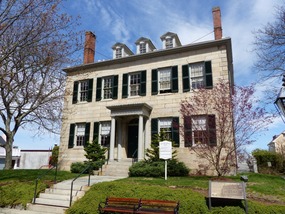
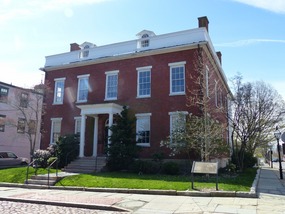
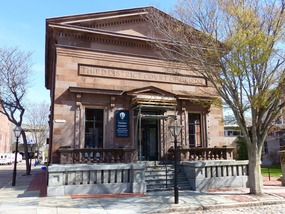
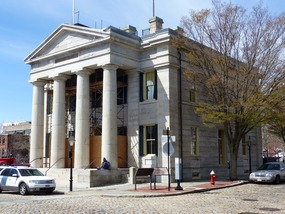
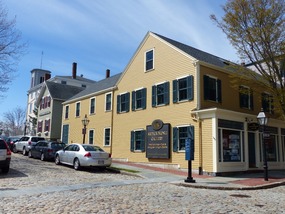
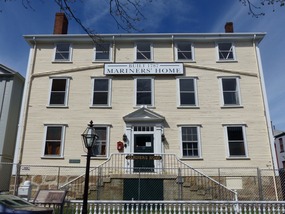
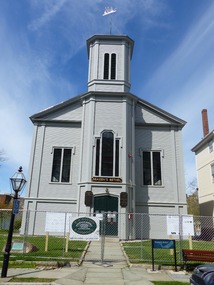
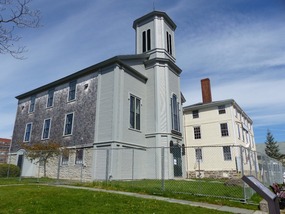
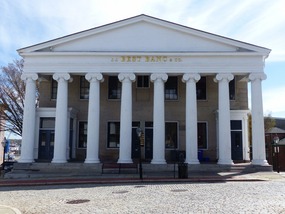

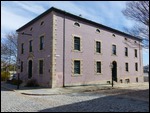
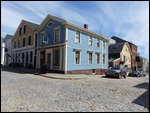

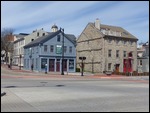

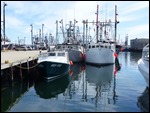
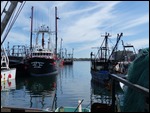
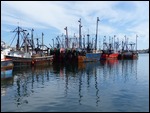
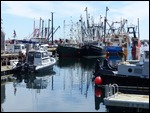
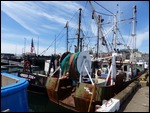
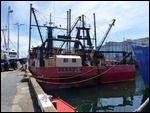
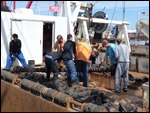
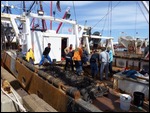


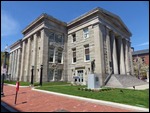
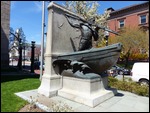

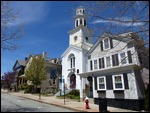
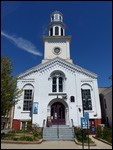


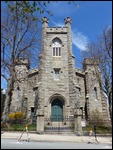
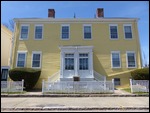


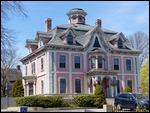







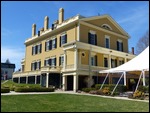
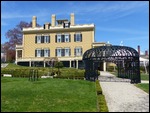
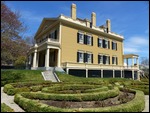


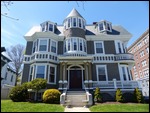


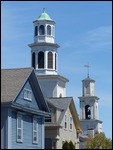
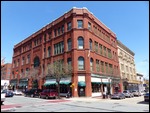
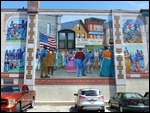
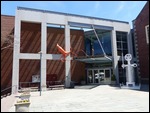
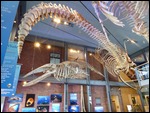



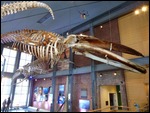
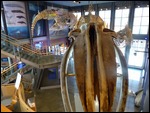
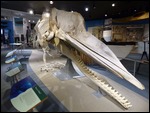
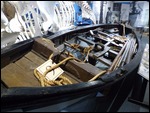
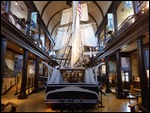
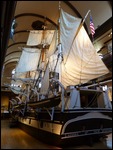
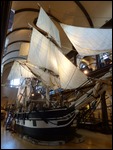




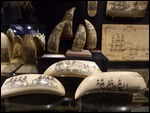
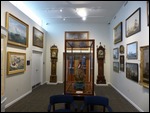
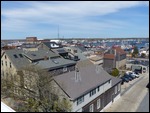
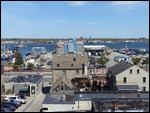
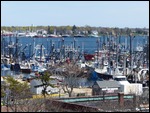
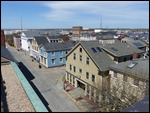
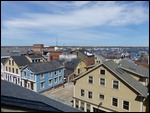
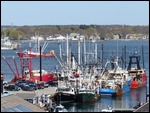
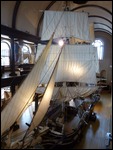


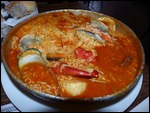
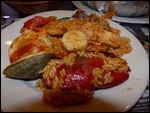

2025-05-22